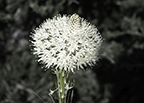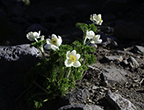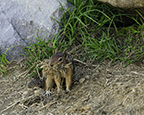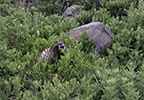Plants and Wildlife
One of the most spectacular aspects of Mt. Rainier National Park is its world-renowned wildflower meadows. Wildflowers in every shade sway in the breeze, filling meadow upon meadow with brilliant colors. A network of sixteen trails skirt around these meadows. When hiking Mount Rainier, hikers are instructed to stay off the meadows in order to retain stability. There are over 890 vascular species and more than 260 non-vascular plant species and fungi in the park. There are more than 100 exotic plant species, especially along transportation corridors, near trails, and in riparian areas.








At Mount Rainier you can find 65 mammal species, 14 species of amphibians, 5 species of reptiles, 182 species of birds, and 14 species of native fish. Invertebrates probably represent 85% of the animal biomass in the park. The highly visible Columbian black-tailed deer, Douglas squirrels, noisy Stellar's jays and common ravens are
animals that many people remember. The most diverse and abundant animals in the park, however, are the invertebrates - the insects, worms, crustaceans, spiders- to name a few - that occupy all environments to the top of Columbia Crest itself. Some of the more popular mammals like elk and black bear range in many habitats throughout the summer. Mountain goats typically remain in alpine or subalpine life zones.
Cougars, also known as pumas or mountain lions are also park residents. Although potentially dangerous, no human injuries
have occurred in the park due to a cougar. They are solitary, nocturnal animals. If you encounter a cougar in the park,
stop immediately and pick up small children. Do not run or crouch down. Maintain eye contact with the cat, stay calm and
slowly back away. If the cougar becomes aggressive, become more assertive by shouting loudly, waving your arms and throw things.
Although unlikely, you may encounter a black bear at Mt. Rainier. Most people who see a bear in the wild consider it the highlight
of their trip. Bears tend to avoid people. In most cases, if you give a bear the opportunity to do the right thing, it will.
If you come across a bear in the wilderness, avoid it if you can, and give the bear every opportunity to avoid you. If you
encounter a bear at close range, remain calm. Chances are you’re not in danger. If you stand your ground, talking to help
ensure that it knows you are a person, the bear will soon leave










